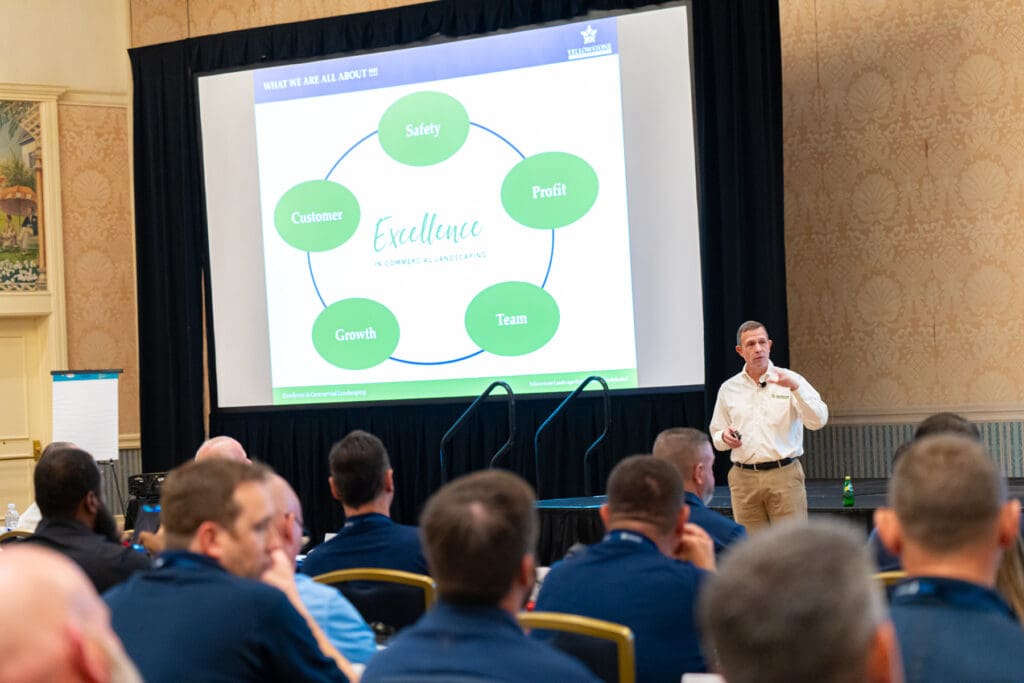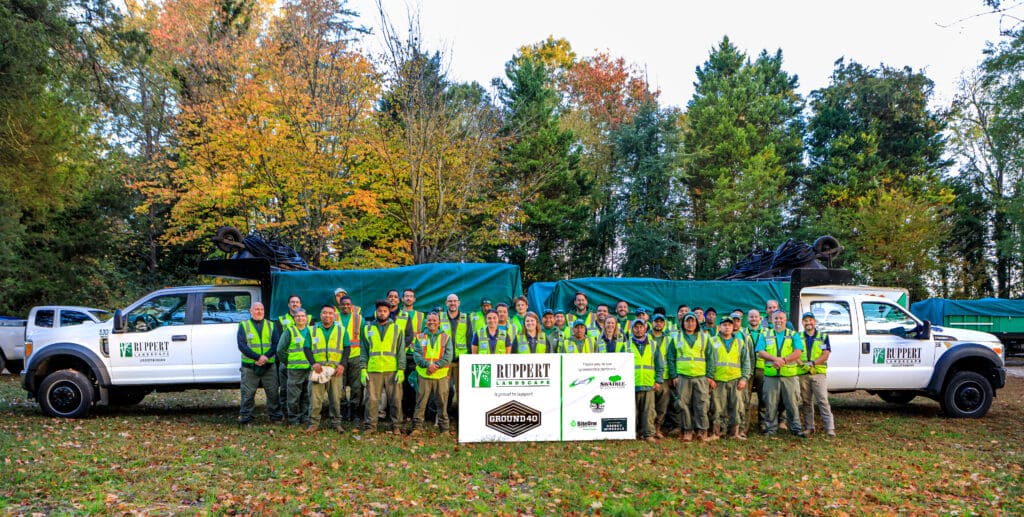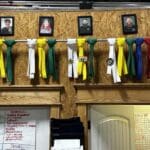
As a leader, you often define and drive your company’s culture. However, as you grow your business, the sheer number of employees and the geographical spread of your operations will make it far more challenging to have a cohesive culture across locations.
Yet, it is not impossible.
Many large landscape companies have been able to grow their footprint without sacrificing the culture that makes them unique.
“It is crucial for consistency, employee engagement and retention, brand identity, alignment of goals, adaptability and innovation, leadership development and customer satisfaction,” says Jerry Ashmore, director of workplace development and safety for The Greenery, based on Hilton Head Island, South Carolina. “Maintaining company culture as we grow ensures that The Greenery stays true to its core values, fosters employee engagement and retention, and enhances overall employee and customer experience.”
Joseph Barnes, marketing director for Yellowstone Landscape, headquartered in Bunnell, Florida, says maintaining their company culture as they grow is all about alignment. Just like a competitive crew team, they all need to be rowing in the same direction.
“As you grow, the boat gets bigger and you get more people and just gets harder and harder, but I think without that common direction and alignment, it’s going to be very difficult to be successful,” Barnes says.
Similarly, Mike Monde, VP of people & culture for Ruppert Landscape, based in Laytonsville, Maryland, says a strong culture keeps them all working together in the right direction.
“Our values and shared vision better equip us to work together as a team, make decisions and solve problems in a consistent way, whether that team is in Maryland or Texas,” Monde says.
Remain Consistent and Measure
The main ways to keep your company’s culture strong despite your size is to remain consistent, be intentional and have measurable metrics.
Monde says as life gets busier, it’s easy to forget some of the basics.

“That’s why we have certain expectations around scheduling ‘appreciate and celebrate’ activities at each branch, why we report on safety statistics at every financial meeting, and have standards related to our vehicles and uniforms,” Monde says. “It’s many little things that make up the whole, and by creating and communicating those standards and then doing spot checks, we ‘inspect what we expect’ and can ensure that we’re not losing track of any of the critical pieces of our culture.”
Ashmore says that prioritizing key factors such as leadership by example, communication of values, hiring for cultural fit, investing in onboarding and training, empowering employees, open communication, rewarding and celebrating positive behaviors and being flexible all help them maintain their culture as they expand.
Barnes says the key to keeping their culture strong is having clear goals and measurable elements.
“We take metrics that make sense and then we benchmark ourselves internally,” Barnes says. “What branches are doing great in safety may be not doing so great in retention or taking care of customers. Maybe they’re not doing a great job of retaining team members. We measure that internally and we can measure it year over year and see how we’re doing as a company, as a region, and then even down to the branch level. I think it’s having those measurable things that you can put a number to and not just kind of relying on a gut feel of how we’re doing.”
Barnes says they always want to show improvement year over year, but they’re also aware of how things in the broader economy could impact their metrics, such as a recession decreasing the demand for enhancements.
Staying on the Same Page
Communication is also critical to make sure the entire team is on the same page. The Greenery sends out weekly safety topics to reinforce their safety culture, while Ruppert Landscape has published a quarterly employee newsletter, the Greensheet, for nearly 50 years.
Monde says every issue has a message from leadership and includes information on horticultural practices, safety awareness, customer projects, community service initiatives, promotions, as well as personal employee milestones like new homes, babies, and marriages. During COVID, they added videos to the mix and started Ruppert Landscape TV, which featured team members talking about community service initiatives, ongoing projects and specific employees.

Barnes says they rely on their branch leaders to communicate with their teams for the most part. He says it’s better for crews to hear from the people they interact with on a daily basis.
“If it feels like all the direction is coming just from the top-level CEO that maybe frontline employees have never even met, it starts to feel like a culture that you may not want,” Barnes says. “It starts to feel like something that’s very corporate. We try very hard not to feel like that.”
During COVID, they ramped up their communication efforts due to the changing policies and Barnes says they also started to take advantage of video conferencing more. Yellowstone will still send out some companywide messaging, like when CEO Tim Portland moved into an executive chair role.
Connect In-Person
Also, don’t underestimate the value of hosting companywide events. Ashmore says they have company meetings to share important information as well as fun events like cookouts and bowling tournaments to help stay in touch with one another and instill camaraderie. The Greenery also has cross-branch collaborations, supervisor swaps, and regular visits from senior managers to create a sense of unity.
Yellowstone has several national gatherings, which they break up into different audiences. At the national level, they have three annual meetings. They have a sales kickoff in early January, a branch and key managers meeting and an office managers meeting. At a regional level, they will gather their account managers and superintendents.

“We see huge value in getting them together,” Barnes says. “Obviously, it’s a big expense. The bigger we’ve gotten more expensive these meetings get to host, but the energy and just the synergy of everybody understands. They get to hear the state of the company from our CEO, and really hear how things are going. We find that interaction with people really energizing. That’s where a lot of our great ideas, a lot of collaboration, come from.”
Barnes says that these events help tie them together and set the table for a great year by meeting before the season starts.
Ruppert brings together their managers from all locations every year in February for two days of training.
“We use the time to share information on the company’s direction and performance and to coach on topics such as time management, customer service, and personal finance and wellness (to name a few),” Monde says. “We round out the training with an awards banquet, to which spouses and significant others are invited, where we recognize high achievers in each branch and companywide.”
Ruppert also holds a financial meeting each month where branch managers from each of their 45 locations attend and report on their financials, new initiatives, and the successes and challenges they’ve had. Monde says this enables their core leadership to share best practices and expectations so they can stay consistent.
Different branches also come together at training sessions held throughout the year and community service projects. Monde says both of these events enable their teams to build cooperation and reinforce their values.
“It definitely strengthens connections and provides opportunities for people to get to know one another,” Monde says. “Those connections enhance collaboration, drive innovation, and enable us to better serve our customers.”
Advice for Others
Ashmore encourages defining your culture and prioritizing cultural fits in hiring, as you can’t maintain a culture you can’t describe.
Barnes says one of the biggest mistakes when it comes to company culture is not having any way to measure it. He says while your mission and value statements are great, they don’t drive the business forward.

“I think if you give people things that you can put a metric to, it at least creates a scoreboard,” Barnes says. “What we found is, in this industry, people are really competitive.”
Yellowstone leans into this competitive spirit by presenting awards like Branch of the Year, Rookie of the Year and Salesperson of the Year. He says this helps create a winning culture and celebrates their team for doing things the right way.
“For owners who are looking to grow their business, they’ve got to figure a way to make it repeatable beyond just themselves,” Barnes says. “I think that’s the hardest thing we see is that they want to start up a second or third or fifth or 10th location. If you’re the only one who can make decisions and you’ve not empowered and built up that bench strength, I think it’s going to be really difficult to scale and grow your business. It’s just going to be exhausting.”
Build a bench so that the company can function well beyond you. Barnes notes that promoting from within also aids in keeping their culture strong as they don’t have to teach incomers what they’re all about constantly.
Monde notes there are many ways to accomplish one task, but if you want your culture to scale with the business, rely on your team to keep your culture.
“Especially as a company grows, it’s important to have culture leaders to step up and play a bigger role in communicating and disseminating the company’s values in every region, at every branch, and in every team in your company,” Monde says. “Teamwork makes the dream work — and every employee has the ability to teach, influence and support the culture as you grow.”
This article was published in the May/June issue of the magazine. To read more stories from The Edge magazine, click here to subscribe to the digital edition.




